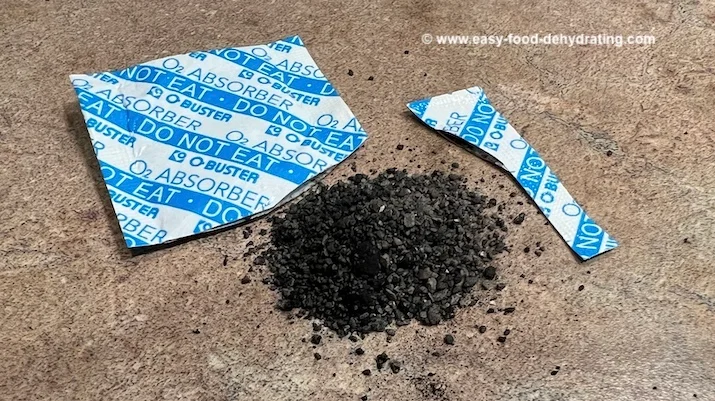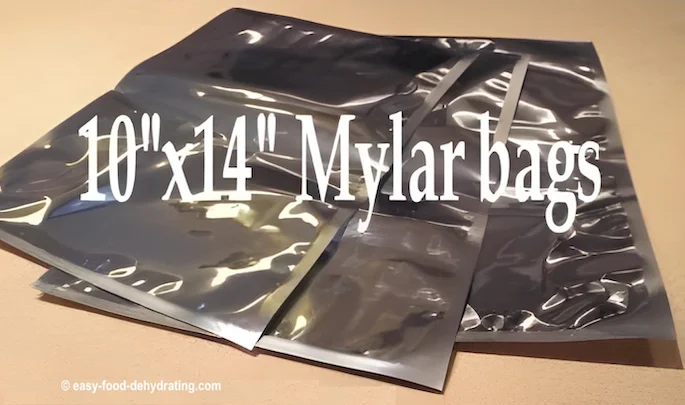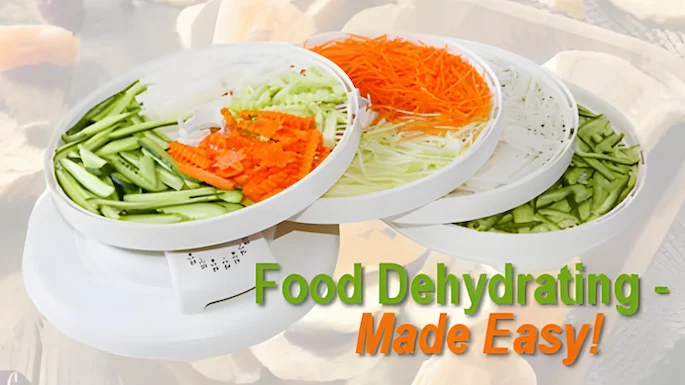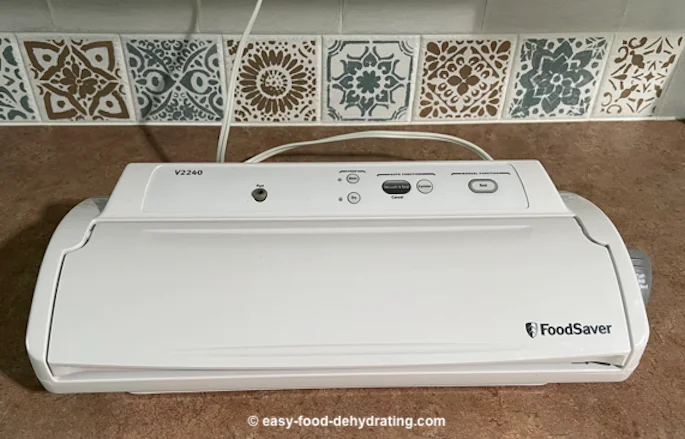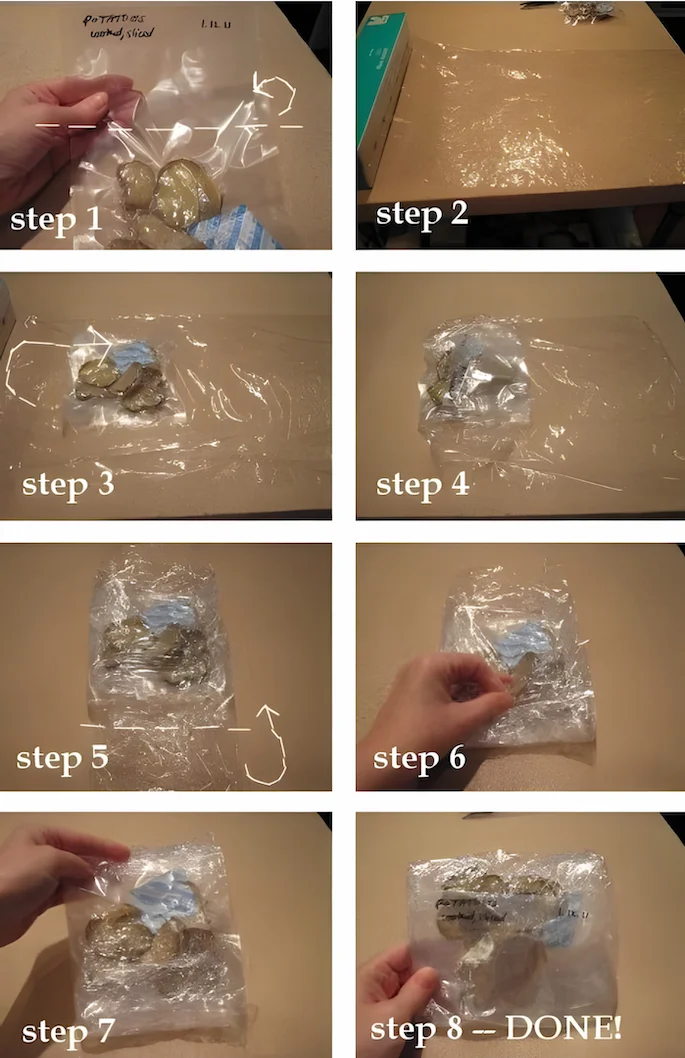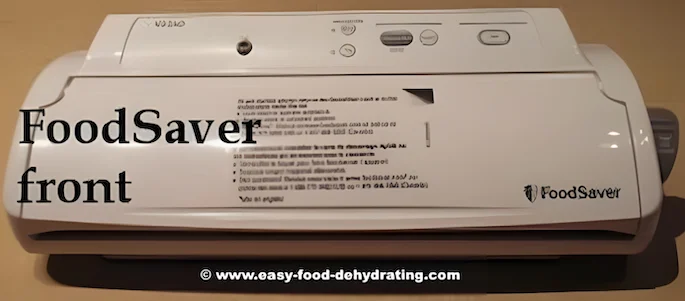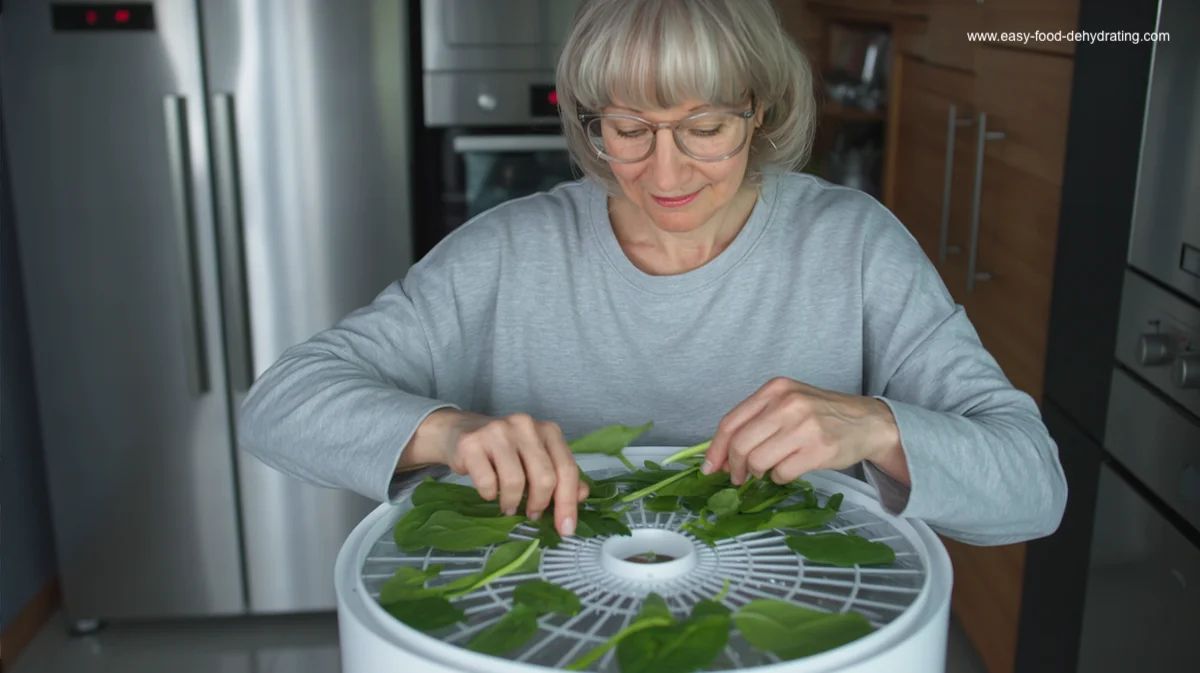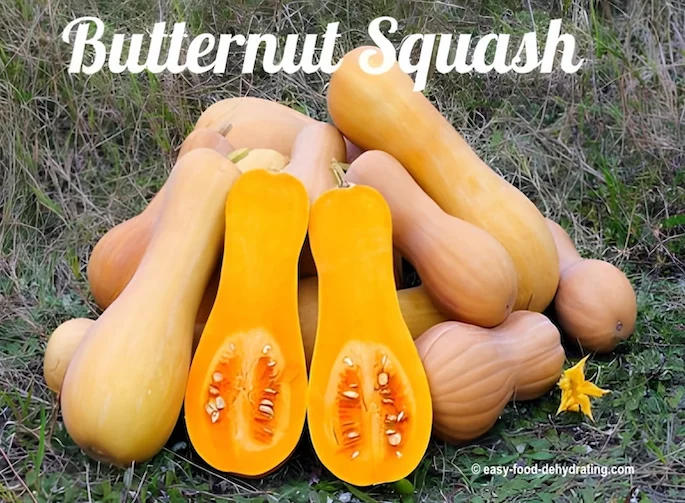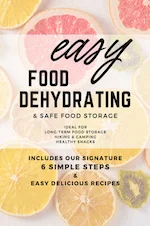- Home
- How to Store Dehydrated Food for Long-Term Freshness
- Oxygen Absorbers for Dehydrated Food
Oxygen Absorbers for Dehydrated Food:
Lock in Long-Term Freshness
Susan Gast, Author
Blogger at Easy Food Dehydrating | A New Sober You | Beesville Books
Today, I want to show you how to use oxygen absorbers for dehydrated food and why they should be in your food-drying arsenal.
 300cc Oxygen Absorber Pack
300cc Oxygen Absorber PackOxygen absorbers can seem a little mysterious at first — but once you understand how they work, you’ll wonder how you ever stored dried foods without them!
Below, you’ll find answers to the most common questions about using oxygen absorbers for dehydrated food, choosing the right size, and keeping your pantry stash safe for the long haul.
Frequently Asked Questions About Oxygen Absorbers for Dehydrated Food
What are oxygen absorbers for dehydrated food?
What are oxygen absorbers for dehydrated food?
They are small packets filled with iron powder and salt that are tucked inside food vacuum-sealer bags before drawing out the air. They actively remove oxygen from the environment, extending the shelf life of dehydrated foods and helping prevent mold, rancidity, and spoilage.
How do oxygen absorbers work?
How do oxygen absorbers work?
The iron inside the absorber reacts with oxygen through a natural process called oxidation. As the iron absorbs oxygen, it reduces the oxygen level inside the sealed container to nearly zero, keeping your dried foods fresher for much longer.
Where can I buy oxygen absorbers?
Where can I buy oxygen absorbers?
I get mine from Amazon because of their fast delivery and reliable brands. If your package arrives with a PINK freshness indicator pill, it’s good. If the pill is PURPLE or BLUE, return the shipment — it means the absorbers have been compromised.
What foods need oxygen absorbers?
What foods need oxygen absorbers?
Oxygen absorbers are ideal for storing low-moisture foods like:
- Dried beans, peas, lentils
- Rice, oats, wheat, barley
- Pasta, dehydrated potatoes
- Flour, sugar, salt
- Nuts, seeds
- Dried fruits and vegetables
- Jerky
- Coffee, tea
- Spices and baking ingredients
- Dog and pet treats
Always ensure the foods are fully dried and the storage container is airtight for best results.
Can I reuse oxygen absorbers?
Can I reuse oxygen absorbers?
No, once an oxygen absorber has been exposed to air and has absorbed its full capacity of oxygen, it cannot be reused.
How do I know if my oxygen absorbers are still good?
How do I know if my oxygen absorbers are still good?
Check the freshness pill inside the bag. If it’s pink, your oxygen absorbers are still active. If it has turned purple or blue, the absorbers are no longer good and should be replaced.
What's the difference between oxygen absorbers and desiccant packs?
What's the difference between oxygen absorbers and desiccant packs?
Oxygen absorbers remove oxygen from the air to prevent spoilage, while desiccants remove moisture. They serve different roles — and sometimes you can use both together for maximum protection.
Do oxygen absorbers make food safe to eat forever?
Do oxygen absorbers make food safe to eat forever?
No. Oxygen absorbers dramatically extend shelf life but food must first be properly dehydrated, stored airtight, and rotated periodically for best results.
📄 Free Printable Oxygen Absorber Size Chart
CLICK HERE
to PRINT OUT the chart below:
Just the white area is printed, not all the pink areas.
OXYGEN ABSORBER SIZE CHART

For food storage bins, always use a 2000cc absorber to ensure proper oxygen removal.
★★★★★★
The page you are reading now is
ONE of the most IMPORTANT
pages on Easy Food Dehydrating
The page you
are reading now
is ONE of the most
IMPORTANT
pages on
Easy Food
Dehydrating
★★★★★★
Why is that? Well, if you're interested in storing food for the long term, make sure to add desiccant packets inside your dehydrated vacuum-sealer bags BEFORE sealing them with your FoodSaver machine or (whichever brand of vacuum-sealer you have).
A NOTE HERE about DESICCANT PACKETS
Use them in conjunction with Oxygen Absorbers.
Here's How and Why...
Why is that? Well, if you're interested in storing food for the long term, make sure to add oxygen absorbers inside your dehydrated vacuum-sealer bags BEFORE sealing them with your FoodSaver machine or (whichever brand of vacuum-sealer you have).
What’s Inside an Oxygen Absorber? (And How They Save Your Food)
Oxygen absorbers are made of iron powder combined with salt. When exposed to oxygen, the iron oxidizes, effectively removing oxygen from the enclosed space. They are necessary for the following reasons:
- Slow oxidation - Oxygen accelerates food spoilage. Removing oxygen drastically slows rancidity, mold growth, and insect infestations.
- Moisture regulation - Iron oxidizing creates a small amount of heat that helps remove moisture condensation, keeping food crisp. Less moisture also inhibits mold as stated in #1.
- Storage life extension - With both oxygen and moisture minimized by our oxygen absorbers, the shelf life of sealed dried foods like grains, beans, nuts, and snack items is extended several years longer than without.
While air-tight containers alone help, adding oxygen absorbers provides an extra level of protection by actively targeting the main causes of food deterioration: oxygen and moisture.
Why Oxygen Absorbers Are Life Support for Your Dried Foods
Remember: Tuck a 100cc oxygen absorber inside the food vacuum bag JUST BEFORE you vacuum seal it, or drop an oxygen absorber in the Mason jar just before screwing on its lid.
If you're using a small (half-pint) Mason jar, use a 50cc oxygen absorber.
For quart-sized Mason jars, use a 100cc oxygen absorber.
Quick Reminder: Why You Should Never Skip Oxygen Absorbers
The Oxygen Absorbers protect our dried foods by removing oxygen, and help deter insect damage. Using them extends the shelf life of our dried food by preventing mold growth, eliminating the need for commercial additives such as BHA, BHT, Sorbates, etc.
The oxygen absorber packets are non-toxic - which is good to know - as they are in direct contact with our dried foods!
Where to Buy the Best Oxygen Absorbers (Fast and Fresh)
NOTE:
50cc are perfect for small jars and containers. Ideal for keeping spices and smaller dried foods fresh.
100cc are great for quart-sized jars and vacuum-sealer bags. The most versatile size for everyday use.
- PackFreshUSA Oxygen Absorbers
- 200-Pack
- Food-Grade, Non-Toxic
- Oxy-Sorb Oxygen Absorbers
- 100-Pack
- Long-Term Food Storage Freshness Protection
- Oxy-Sorb Oxygen Absorbers
- Bags of 20 (60 Count total)
- Super Effective for Dried Goods
- Oxy-Sorb Oxygen Absorbers
- Pack of 10
- I use these for airtight bins and buckets
As an Amazon Associate, I earn commission from qualifying purchases. The price you pay does not increase. Read disclosure here.
Pink Pill = GOOD
Blue/Purple Pill = BAD!

When the 100-pack of oxygen absorbers arrives, BEFORE OPENING IT
or putting it away, immediately check for the little pill in the
bag.
It MUST BE PINK. If it's BLUE/PURPLE... that's not good.
• • • • •
The pill turns BLUE/PURPLE when the pill has absorbed oxygen, therefore telling you that the contents of the shipment are probably no good.
So before you OPEN that shipped package, check for a pink pill.
If it's blue/purple, return that order unopened for a replacement!
Blue/Purple Pill =
NO GOOD!
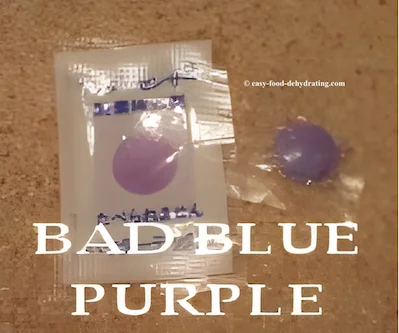
The photo shows the pills that have turned from a very definite pink to an almost blueish-purple color.
This indicates that the oxygen absorbers contained in the bag are highly likely "no good."
Pro Tip: How to Store Bulk Oxygen Absorbers Like a Pro
If the pill is good i.e. "pink," I'll open the new 100-pack bag and take out 5 brand new quart-size vacuum-sealer bags.
I then place 20 oxygen absorbers from the 100-pack bag
into each of the quart-size vacuum-sealer bags and immediately vacuum seal
them all.
The reason for splitting them up is we don’t want to open and seal the original big bag over and over just to take out one or two oxygen absorbers. Doing that would soon ruin all the other oxygen absorbers (by air infiltration) before we even get a chance to use them!
This means I now have FIVE quart-size bags with 20 oxygen absorbers in each of them.
The pink pill from the original bag can go into one of the five bags—no need to throw it away, we can reuse it until it turns purple!
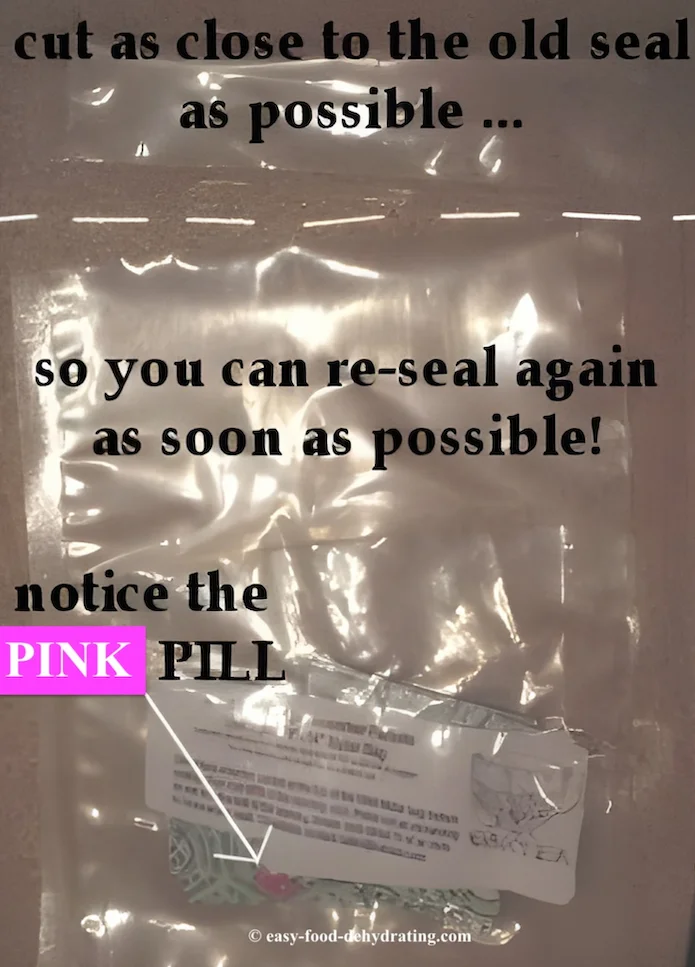
How to Open and Reseal Oxygen Absorber Bags the Right Way
When I'm ready to use an oxygen absorber, I simply cut directly beneath the old seal at the top of the bag (shown as a dashed line at the top of the bag in the photo above).
Cut as straight as you can and as
close to the old seal as you can—then I remove as many packets as I
need and put them in the dehydrated food bags that are waiting to be
vacuum sealed. Then reseal that package.
Because you're cutting off the top seal each time and then resealing at the top again, you will be moving farther down the bag, if you will. What I'm prattling on about is if you just just cut the bag willy-nilly, you're wasting the bag and resealing possibility. Heck, if there's a long way of describing an easy step, I'll find it! LOL
When that resealing job is done, you're good to carry on with vacuuming your dehydrated food goodies. Don't forget to add the dang oxygen absorber in the bag before vacuuming... (Yep, it happens).
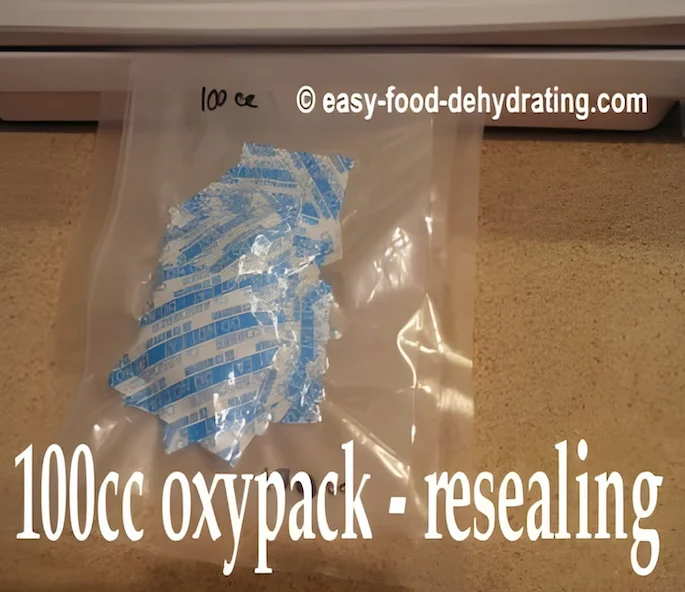
Reseal Opened Oxygen Absorber Bags ASAP
Re-vacuum and seal the oxygen absorber bag (see photo above) after taking out what you need.
I can re-seal one of the oxygen absorber bags about four times... and if I've any remaining packets and the bag gets 'too short' to reseal, I'll put those remaining packets into a new bag and vacuum seal it!
Everyday Uses for Oxygen Absorbers You’ll Love
I use oxygen absorbers for dehydrated food storage for the following reasons:
- For dry foods - Oxygen absorbers prevent stale flavors, bugs, and rancidity in stored grains, beans, dried fruits, nuts, coffee, spices, and other dry goods.
- In Mylar bags - I use oxygen absorbers inside Mylar bags to remove oxygen when packaging bulk foods for long-term storage.
- Dehydrated foods - They help retain nutrients and prevent oxidation in dehydrated fruits, vegetables, and meats.
- Environmentally friendly - Oxygen absorbers reduce food waste by keeping home-preserved foods fresh for longer periods.
Backpacking Tip: How to Know When Your Sauce is Fully Dehydrated
Linda posted this question on our Facebook page:
"Hi, I am dehydrating items for a backpacking trip. I have some rice with Alfredo sauce going and was wondering how you know when things are dehydrated enough. I don't want to make anyone sick with my food."
Hey Linda! I hear you regarding not wanting to get sick!
When dehydrating the sauce, spread it out on a fruit leather tray on the dehydrator... dry it like a fruit leather. When it's dry, peel it off the tray and roll it up. When out and about, add enough water to reconstitute the sauce in a saucepan over heat.
As you can imagine, rice doesn't have/hold much water compared to a 'sauce.' I assume you're taking along with you "cooked" rice. If so, simply vacuum-seal it when it's cooled down to room temperature. Add in an oxygen absorber to both the sauce and rice packet(s) so it can do its job before vacuum-sealing. If you're going on a short trip, this method should work out fine for you.
Thanks for stopping by to learn about oxygen absorbers for dehydrated food usage and why there are different sizes. Questions? Write to me here.
Grab 5 Dried Food Recipes You'll Actually Love
Don't forget to grab a copy of our all new
5 Dried Food Recipes (That Actually Taste Great)
They're my all-time favorite easy dried food meals!
Get it here right now.
For Free!
Before You Go...
If you like the content, please give me some love by clicking on the 🩷 in the lower right-hand corner (on just about all my pages). This signals to me that you find it enjoyable and useful.
And don’t forget to grab your FREE 5 Dried Food Recipes via the opt-in form — they're waiting for you! Thank you so much! (Get it here).

